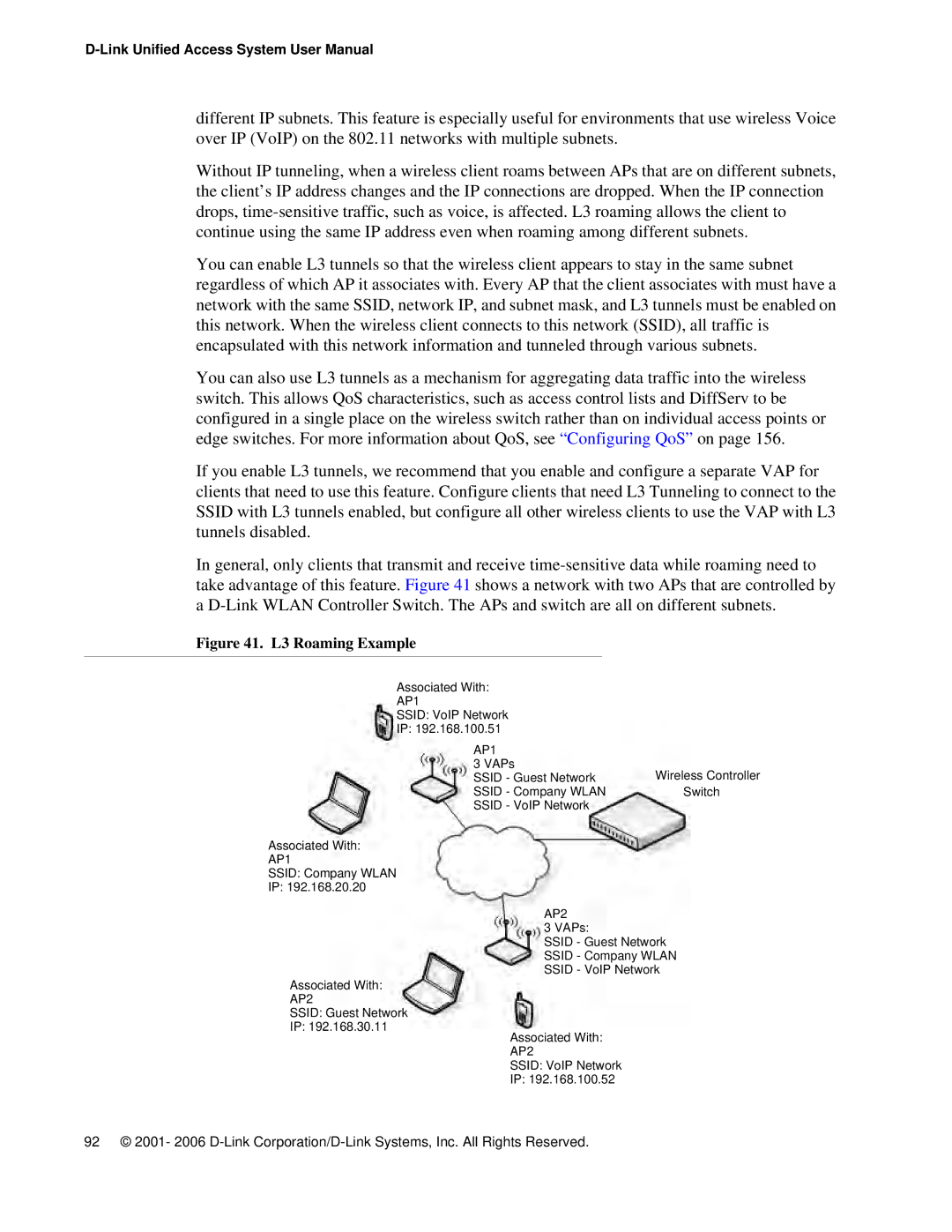
different IP subnets. This feature is especially useful for environments that use wireless Voice over IP (VoIP) on the 802.11 networks with multiple subnets.
Without IP tunneling, when a wireless client roams between APs that are on different subnets, the client’s IP address changes and the IP connections are dropped. When the IP connection drops,
You can enable L3 tunnels so that the wireless client appears to stay in the same subnet regardless of which AP it associates with. Every AP that the client associates with must have a network with the same SSID, network IP, and subnet mask, and L3 tunnels must be enabled on this network. When the wireless client connects to this network (SSID), all traffic is encapsulated with this network information and tunneled through various subnets.
You can also use L3 tunnels as a mechanism for aggregating data traffic into the wireless switch. This allows QoS characteristics, such as access control lists and DiffServ to be configured in a single place on the wireless switch rather than on individual access points or edge switches. For more information about QoS, see “Configuring QoS” on page 156.
If you enable L3 tunnels, we recommend that you enable and configure a separate VAP for clients that need to use this feature. Configure clients that need L3 Tunneling to connect to the SSID with L3 tunnels enabled, but configure all other wireless clients to use the VAP with L3 tunnels disabled.
In general, only clients that transmit and receive
Figure 41. L3 Roaming Example
Associated With:
AP1
SSID: VoIP Network
IP: 192.168.100.51
AP1 |
|
3 VAPs | Wireless Controller |
SSID - Guest Network | |
SSID - Company WLAN | Switch |
SSID - VoIP Network |
|
Associated With:
AP1
SSID: Company WLAN
IP: 192.168.20.20
AP2
3 VAPs:
SSID - Guest Network
SSID - Company WLAN
SSID - VoIP Network
Associated With:
AP2
SSID: Guest Network
IP: 192.168.30.11
Associated With:
AP2
SSID: VoIP Network
IP: 192.168.100.52
92 © 2001- 2006
